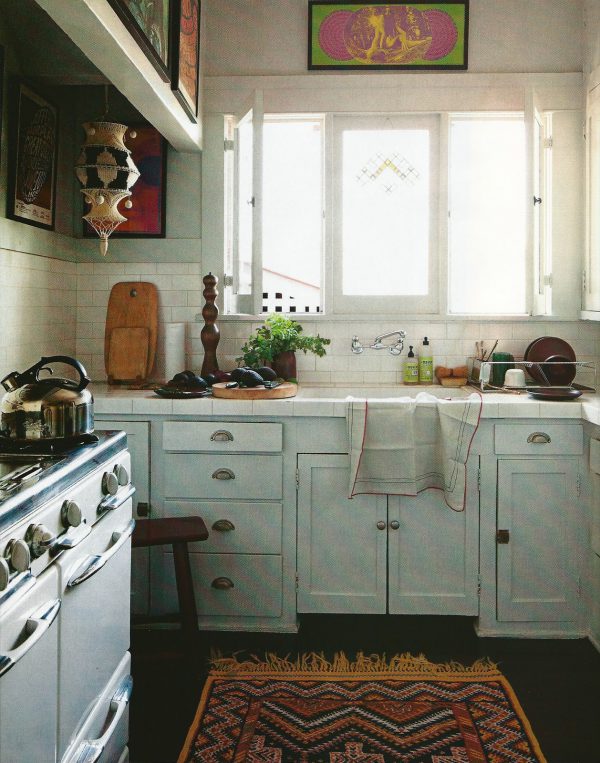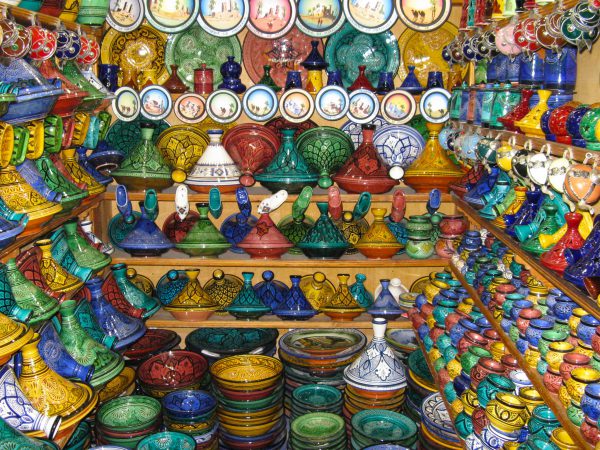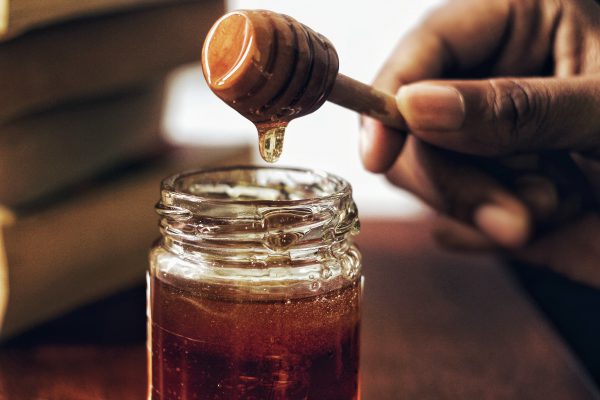Last Updated on February 22, 2023
Mason jars are amazingly well suited for many jobs, both in and outside the kitchen. They are durable, sealable, non-toxic, aesthetically pleasing, and dishwasher and microwave safe. And if you frequently buy foods like sauces and pickles, you’ll essentially get them for free.
Until recently, using mason jars around the house for more than their most apparent purpose, like serving drinks in them, was considered a “hillbilly” thing to do. But the cozy, comfy, rustic, and vintage countryside home decor trend is taking over, with young people romanticizing the rural life aesthetic more and more – also known as the cottagecore trend.
Anyway, as we’re about to show, you can do so many things with mason jars, and discarding them is not on the list. So if you’d like to make the best out of these endlessly versatile glass containers, you’ve come to the right place. Here’s a whole list of ideas on how to put your mason jars to use.
Serving Drinks
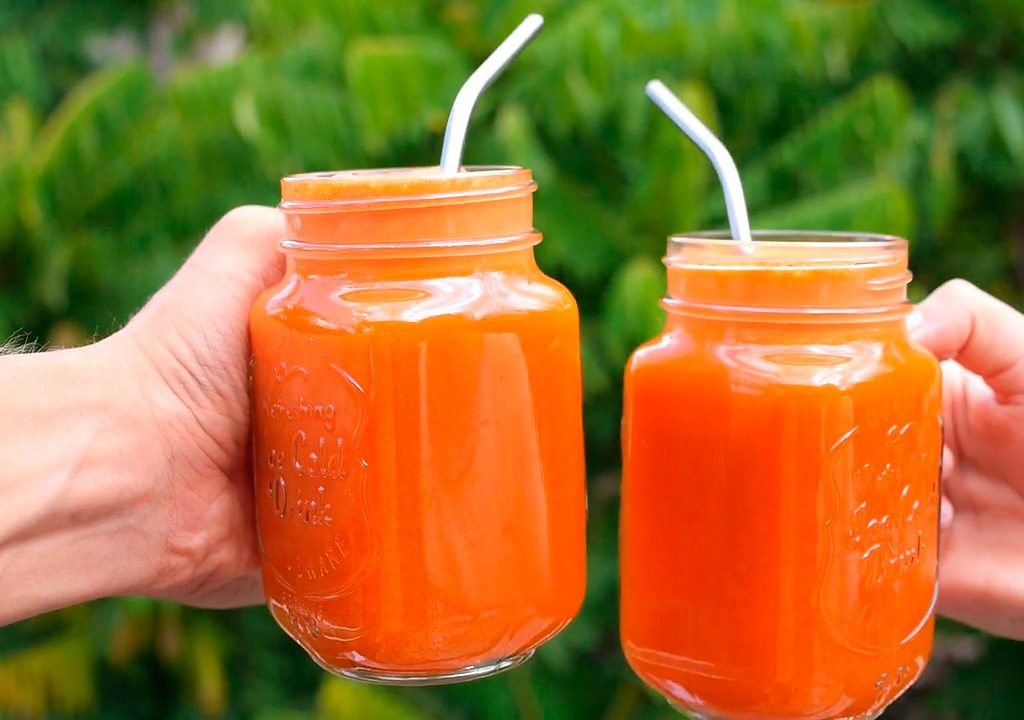
You might have seen cocktails served in vintage-looking jars in restaurants, bars, and even at a party next door. Some say it’s pure nostalgia, while others say they are simply useful.
Whatever it is, serving a drink in a jar has some benefits, and the most obvious one is that you can simply seal a jar off and put it in the fridge. The mason jars are also much more durable than regular glasses, which will save you money in the long run.
Plus, they are always better than any other plastic container to drink from. The glass doesn’t get permeated with the smell from previous drinks, soaps, and detergents.
Storing Dry Ingredients in the Kitchen

Kitchen staples usually come in plastic bags, but who says they have to remain there? Plastic bags crammed in the pantry not only look ugly, but they are also hard to stack on top of each other. So, make yourself a favor and pour the dry kitchen staples like flour, sugar, salt, rice, beans, legumes, and the like into glass jars when you bring them home from the store.
This way, you can easily stack them in your pantry and be able to see what’s inside at all times. Also, the see-through glass allows you to keep an eye on the contents and intervene if you notice any mites and weevils, preventing the whole thing from going to waste.
The fact that glass jars are perfectly sealable also means that you’ll be able to protect your ingredients from getting into contact with air and moisture, which will keep them fresh for much longer.
Canning
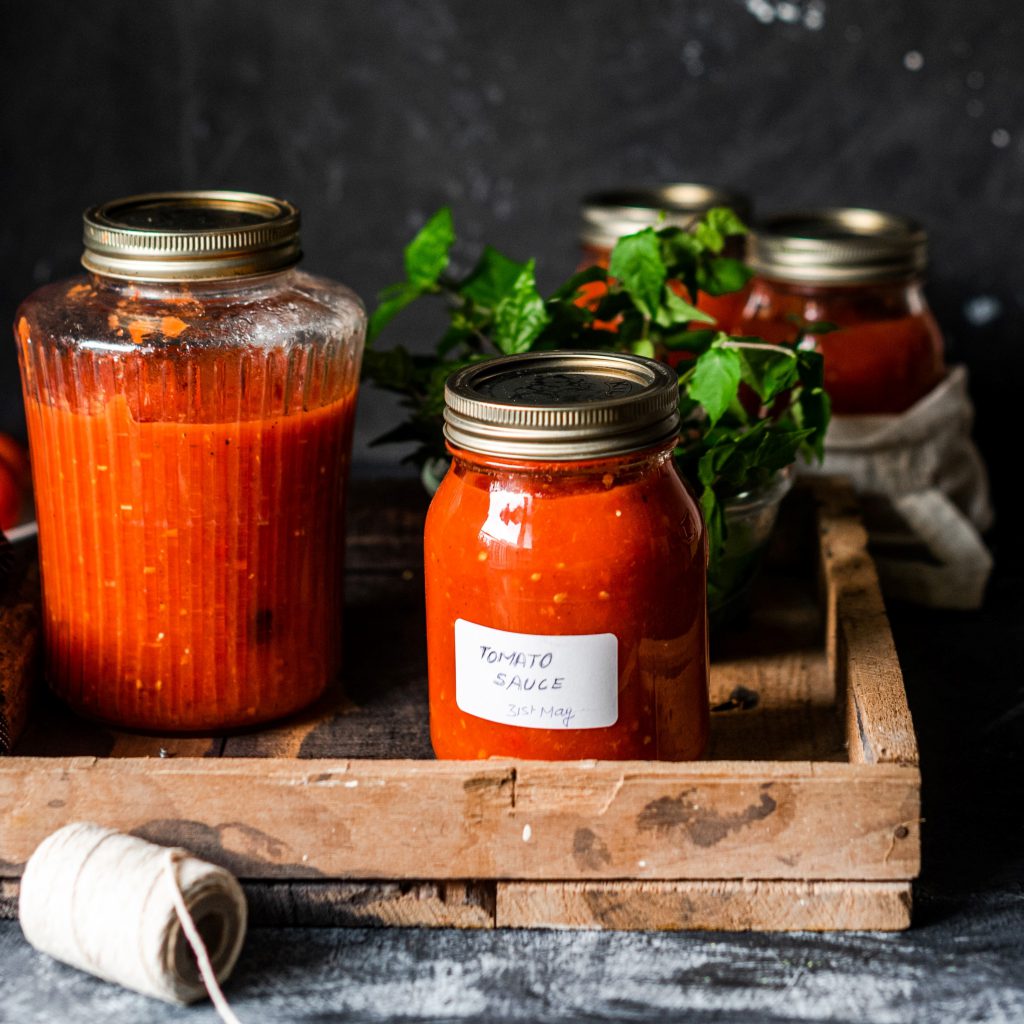
If you’re new to canning, it might seem like too much trouble, but if you ask an experienced canner, they’ll tell you that it’s worth the effort in a heartbeat. Homemade sauces, salsas, jams, jellies, and pickles made in season are not only superior to their store-bought counterparts in terms of deliciousness, but they are also environmentally friendly. And once you dedicate a day to making these, you’ll have delicious canned sauces, jams, and pickles all year round.
Creating an Indoor Herb Garden
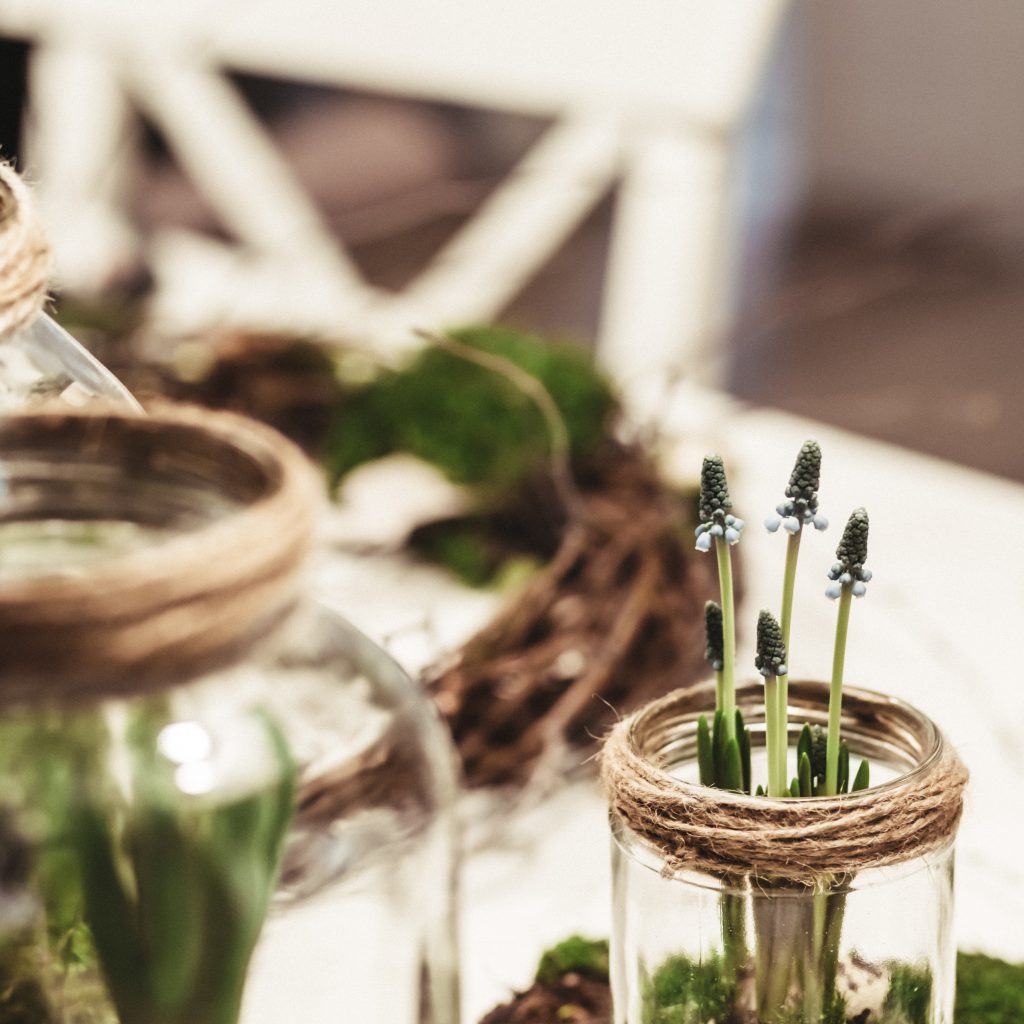
Most herbs are extremely easy to grow indoors – all you need is a container filled with soil and some herbs to plant. You can use anything for this task, from a cut-in-half plastic bottle to empty cans, and of course, glass jars.
Glass jars don’t necessarily make it easier to sprout seeds or grow herbs in them, but if you like to show off your indoor garden, they are definitely the most beautiful containers to upcycle. You can watch the roots grow through the glass and play with colorful pebbles at the bottom of the jar.
Why pebbles? When growing herbs in pots — or jars in our case — proper drainage is crucial. Now, since it’s not that easy to cut holes in the bottom of the jar, you can simply place a pile of rocks at the bottom up to 1 cm in height. Tip: use white or colorful pebbles for a bonus beauty point.
Storing Your Meal Prep Food
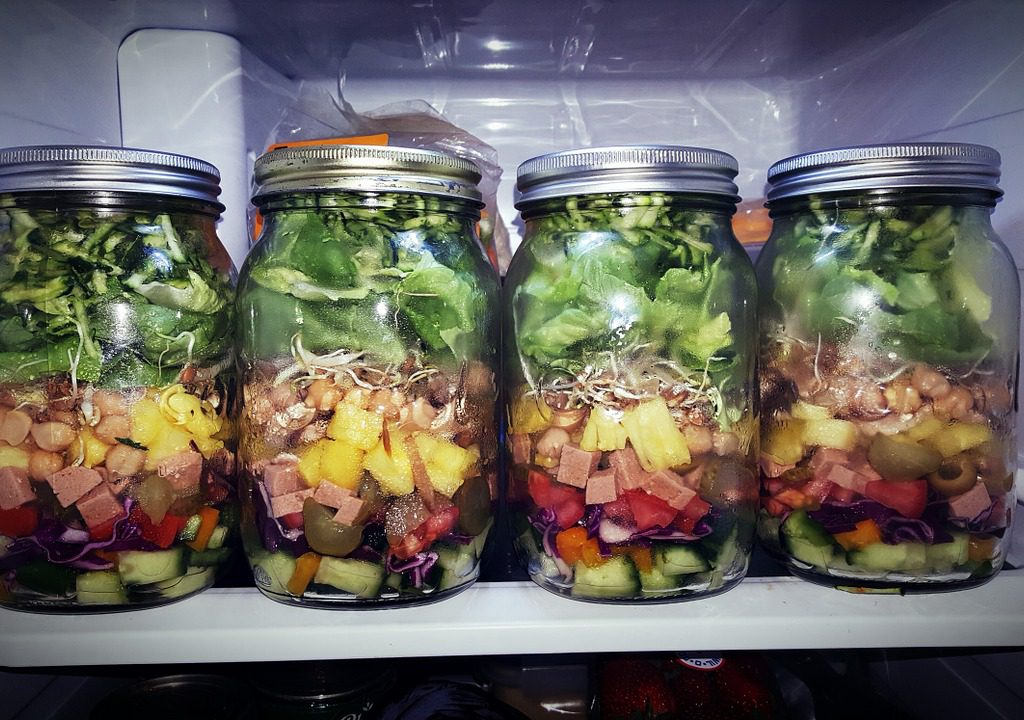
If you’ve heard the story of the fox and the crane before, you know that not all containers are suitable to eat from. It’s not very sensible to serve stews in a jar, but they’re great for keeping the food fresh for a long time.
Mason jars are a perfect way to make a meal plan for the week ahead — you have to try it, especially if you live alone. You can store stews, soups, pasta, stir fry, rice, steamed vegetables, and salads too.
You can prepare a salad in a mason jar and keep it fresh until you want to eat it by building it in reverse. How do you do that? You simply put the salad dressing at the bottom and go from small to larger slices, or from wet to dry ingredients. Finish with a green base of kale, baby lettuce, spinach, or anything else you found at the farmers market that day.
With this method, you can make jars of salads for the week and keep them in the fridge until you’re ready for some fresh salad. You can also take the jar with you to school or work, as long as you make sure it stands upward until mealtime. And when you’re ready for it, simply turn the jar upside down and watch the delicious dressing running through and coating the fresh ingredients.
Blender Jar
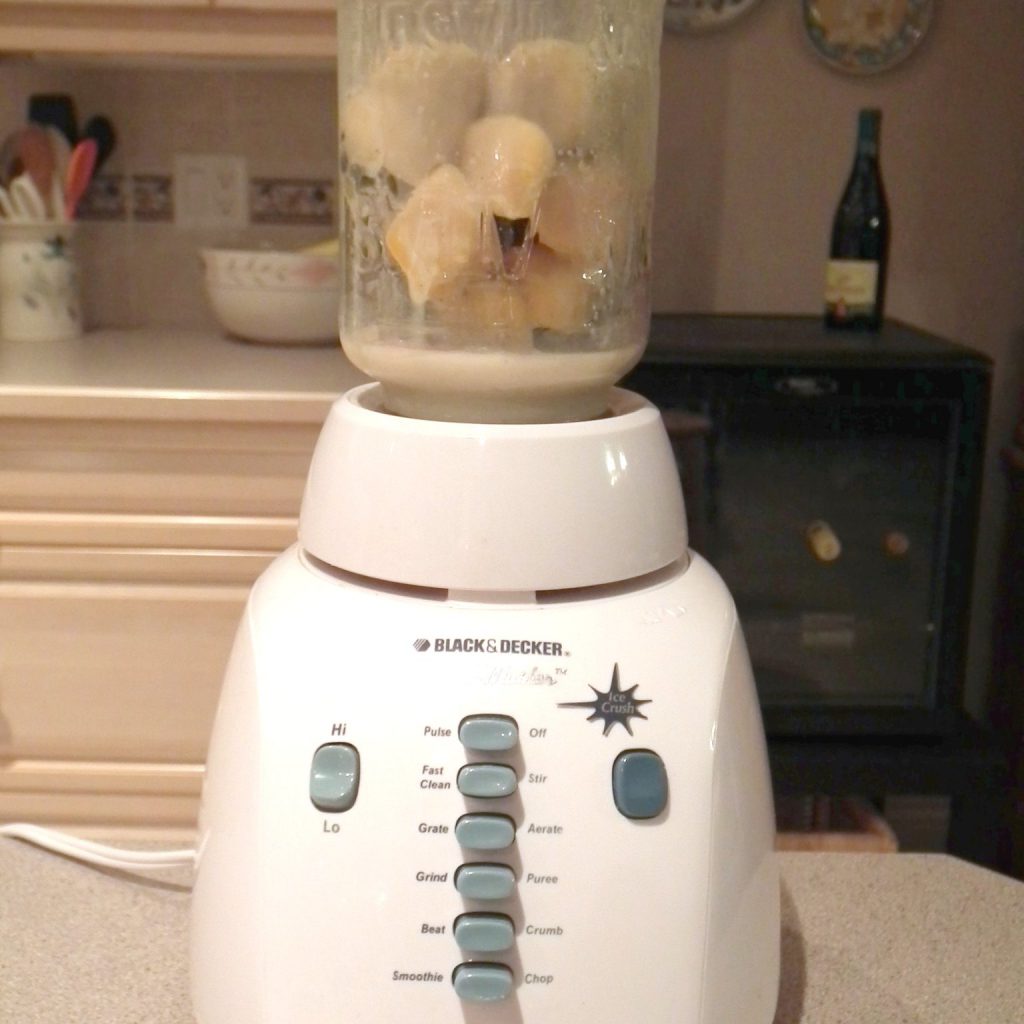
By Jo Stockton
Here’s a kitchen tip that can change your life, especially if you frequently use a jug blender. If you unscrew the plastic part of your blender’s blade, you’ll see that the blade fits perfectly into a rim of a standard mason jar. Then you can screw the pieces back together and use the jar as a pitcher.
This blender will save you from a considerable amount of dirty dishes over time. You can also blend smoothies and drink them right from the jar or toss them in the fridge. Once you’re done, you only need to wash the blades, and that’s it.
Mason-Shaker
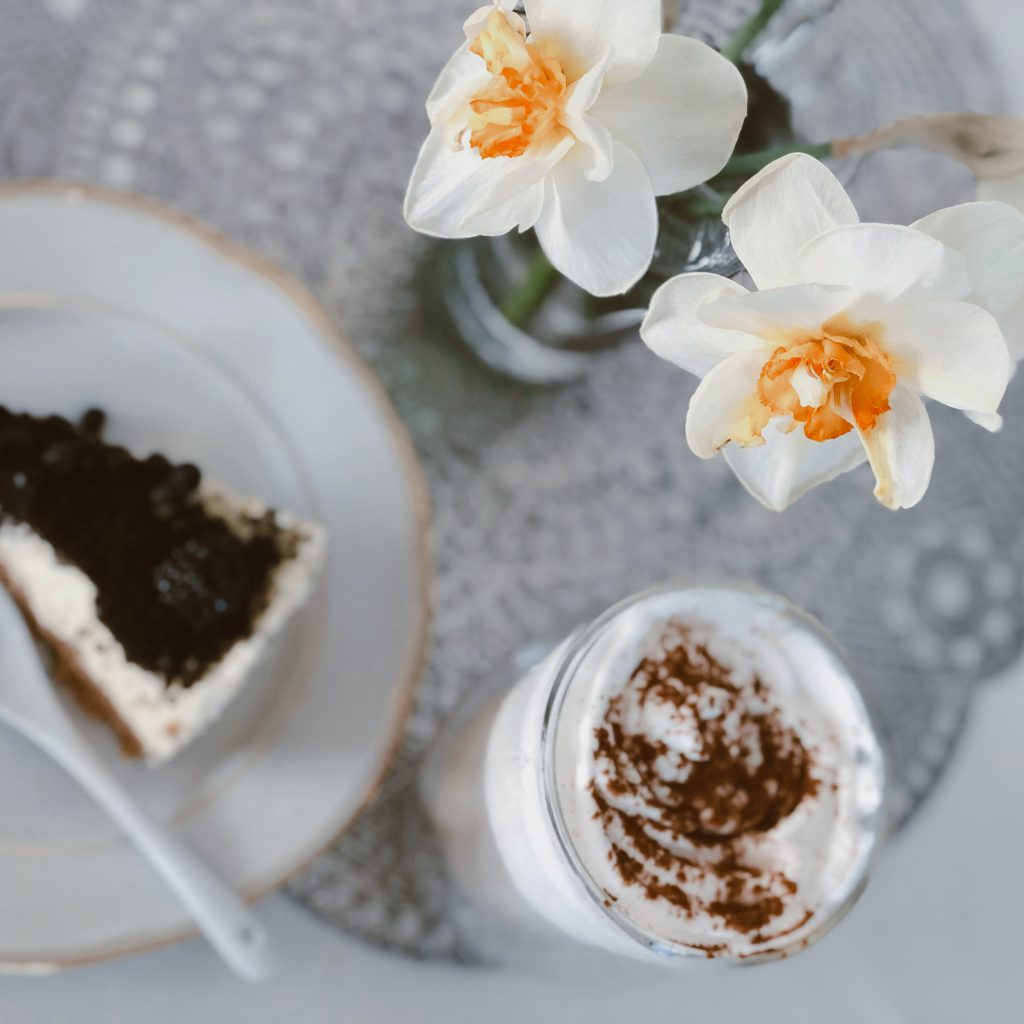
Let’s say you want to whip some cream but don’t have a hand mixer or an immersion blender at hand. Did you know you can easily make whipped cream with a mason jar? Simply add the ingredients for the cream to an empty, clean jar, making sure you leave enough space so you can give it a decent shake.
As you shake the mix, you’ll see air bubbles emerging in the jar, which is a sign that you’re on the right track. If you stop at this stage, the cream will dissolve and return to its original consistency; but if you continue shaking, you’ll see the mixture thicken.
Thanks to this trick, you’ll never reach for a store-bought canned whipped cream when the means are limited. All you need is the ingredients and a good old mason jar: no additional equipment, no mess.
Homemade Yogurt
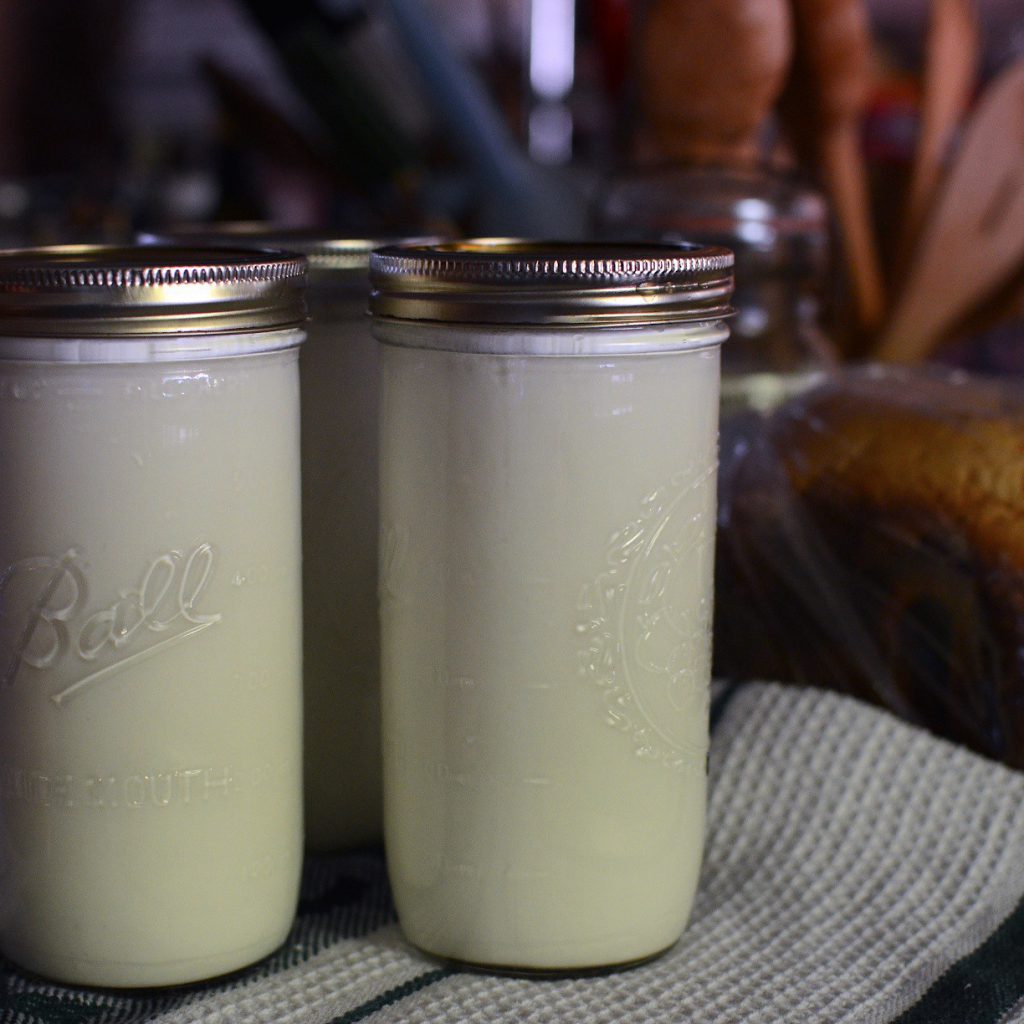
By Adrian
Yogurt is the greatest wonder that bacterial fermentation has gifted to humankind. Like many other fermented foods, yogurt has terrific health benefits. It’s also delicious and perfect for an easy breakfast when you’re running late.
While it’s true that the supermarket shelves are full of all kinds of yogurts – from zero fat to high-protein ones – making your own yogurt is surprisingly easy, cheaper, and healthier than the store-bought yogurts, and the fastest way to become a homesteading rockstar.
First, bring the milk to a boil and then let it cool for a while. The temperature should ideally be 41 C°, which you can easily measure with a kitchen thermometer.
To make yogurt in mason jars, simply fill the clean jars with warm milk leaving about 5 cm of room at the top. The most important thing when making yogurt is the temperature of the milk because you’re going to mix the yogurt yeast into the milk and hope the little bacteria thrive.
The next step is adding the yogurt yeast to the jars, which is, well, yogurt itself. It’s better if you can find organic yogurt to propagate, but if you can’t, you can just go with store-bought yogurt — which will yield good results at the beginning but your batches may weaken over time, so keep your eyes open for some organic yogurt to use as a starter. Take a tablespoon of milk from the jar, mix it with a tablespoon of yogurt, and pour it back into the jar.
Finally, leave the jars in an insulated place, like inside the oven or the microwave. You can also wrap them in clothes and blankets for insulation for around 8 hours. After 8 hours put lids on the jars and transfer them into the fridge. Congratulations on your happy bundle!
Storing Leftovers in the Fridge
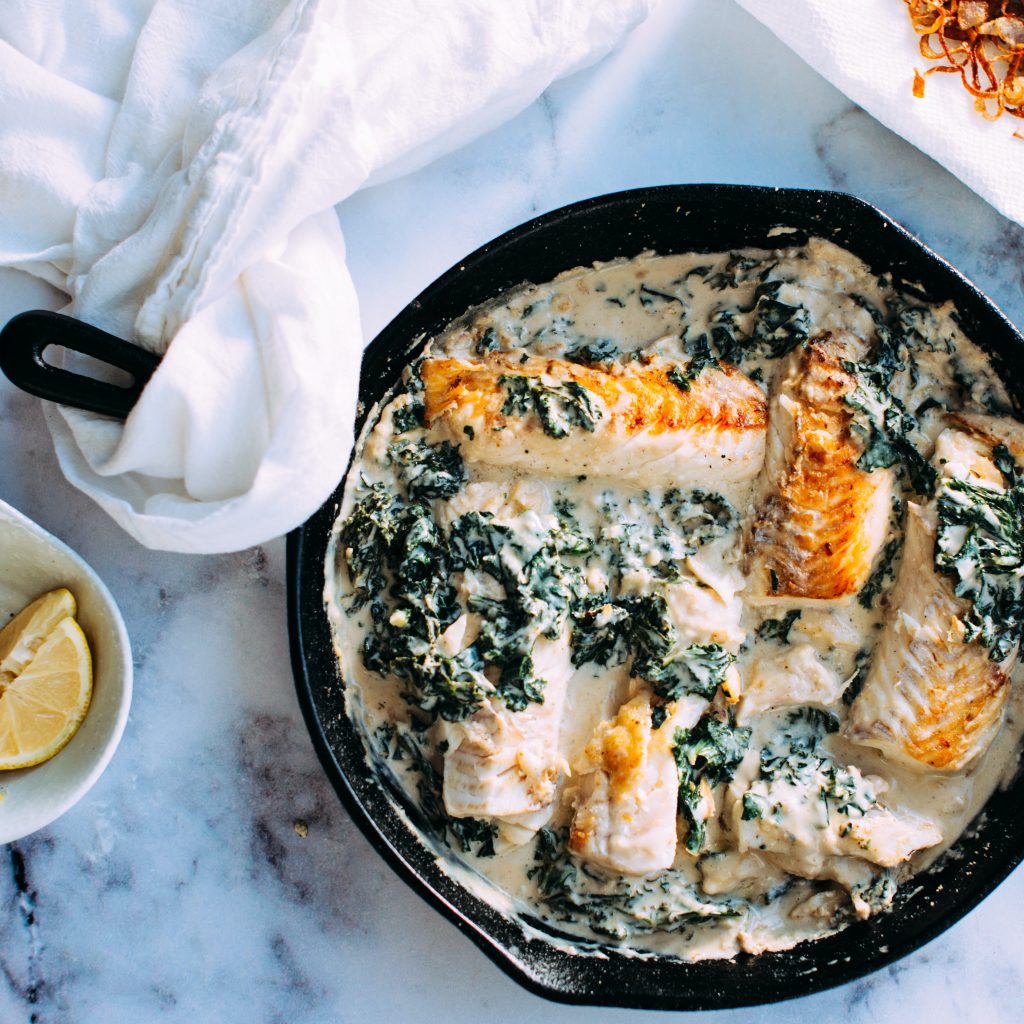
We talked about mastering food prep and salads in jars, but they are capable of holding much more. These non-toxic vessels with super practical lids are great for storing anything you can fit in them, including leftover food that you can put to good use in the following days.
Sure, Tupperware is great, airtight, microwave and dishwasher friendly, and easily stackable. But guess what! So are mason jars, and they are also almost free. Plus, when you store the leftovers in transparent mason jars, you’ll quickly see what’s in them whenever you open the fridge. Keeping the leftovers in sight is a good practice so that you can remember to use them before they go bad — no more sad forgotten containers at the back of the fridge!
Flower Vases

Flowers are nature’s way of smiling at us. If you’re looking for a way to bring fresh air to your kitchen, decorate your countertop with some fresh flowers that you’ll simply put in a mason jar. You can get a rust-proof frog lid to make the flowers stand upright better, and easily arrange them in the way you like. This way, you can fill every corner of your kitchen with colorful bouquets!
Soap and Cosmetics Dispenser
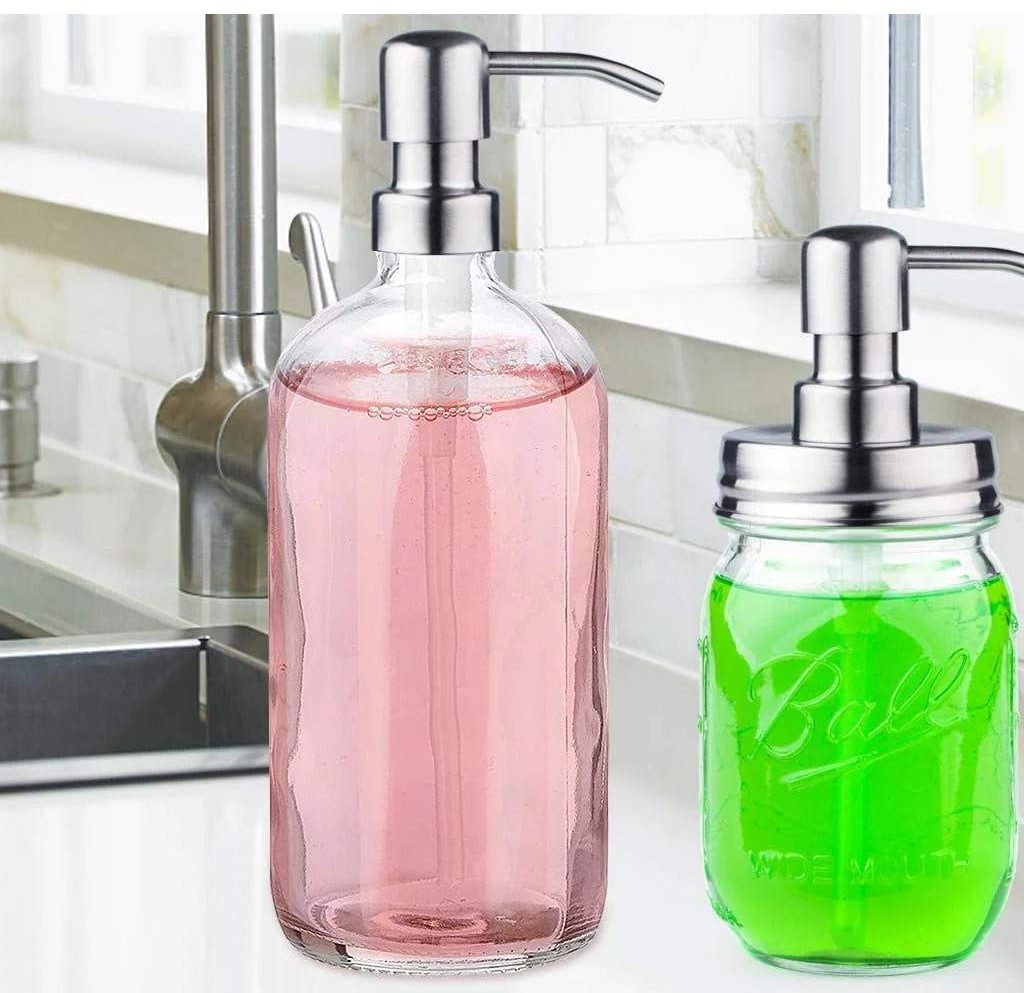
Are you tired of plastic soap dispensers? How about turning a mason jar into a beautiful soap dispenser by attaching a pump lid to it? It’ll make a rustic country decor and turn any mason jar into a dispenser of any sort: for soap, mouthwash, facewash, and any other liquid product.
Succulent Garden
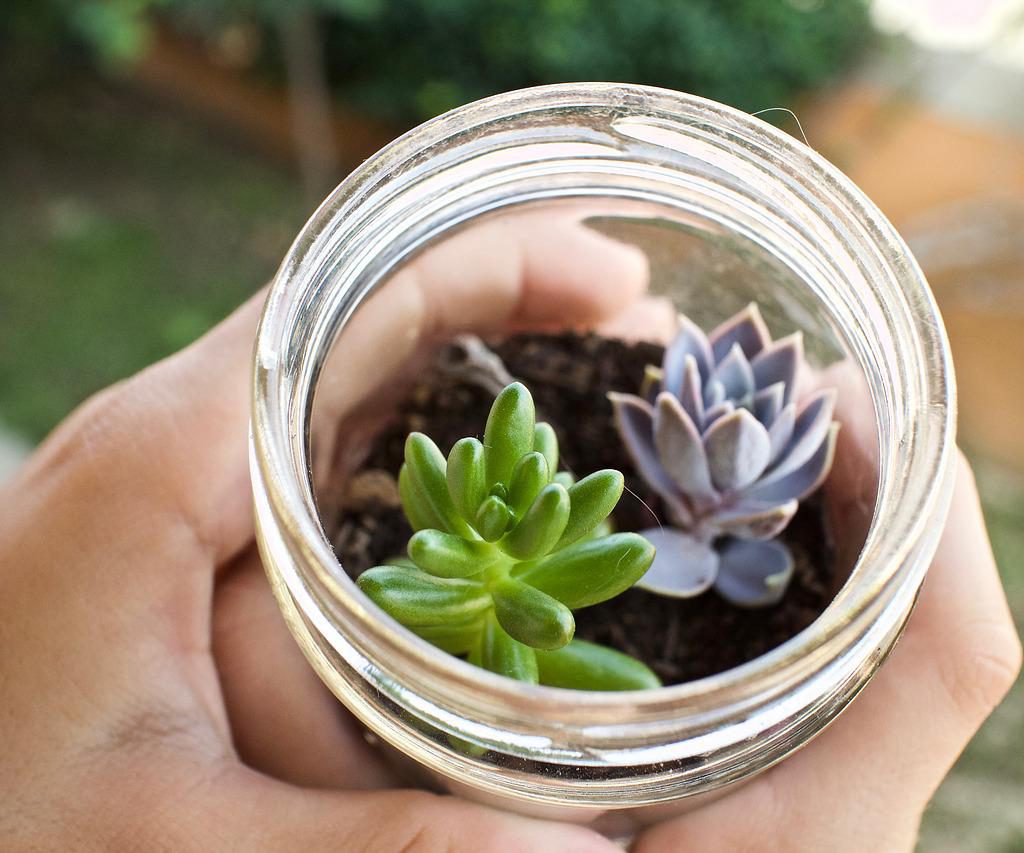
If you’re looking for an easy way to bring some liveliness into your home, let us introduce you to the world of succulents. Growing these little alien-looking plants has become very popular since the beginning of the pandemic, probably because they are super easy to care for — and they come in a variety of funky shapes that you’ve got to love. They are also usually small enough to fit in a mason jar.
Remember, drainage is vital for any plant, so a mason jar is not the ideal container unless you make some arrangements. You can solve this by adding pebbles at the bottom of the jar, a few centimeters high, as we already mentioned. You can play with different rocks in different colors and shapes and make exciting arrangements for your alien-looking indoor plant garden.
Bird Feeder
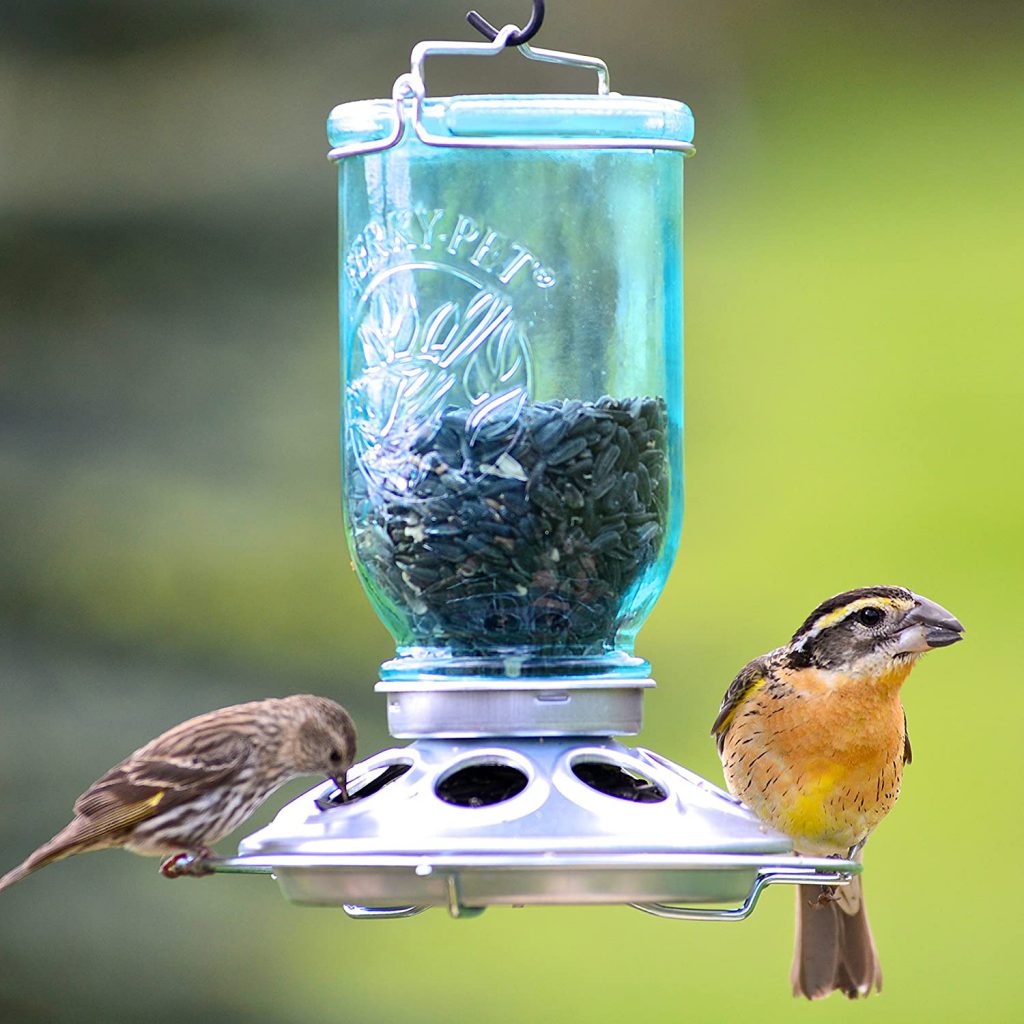
Birds are great for a garden’s ecosystem — unless you’re growing berries. They eat grubs and bugs that you are better off without. If you’d like to be visited by birds in your garden, try gaining their hearts with a DIY birdfeeder. Thanks to some lids made for feeding and watering birds, you can turn your garden into one that’s fit for a Disney princess.
This Perky-Pet mason jar wild bird feeder provides plenty of food for your little flying guests. Different birds love different seeds, so you can decide which species is going to visit you by the kind of bird seed you put in the jar.
Vintage Mason Jar Light Fixture
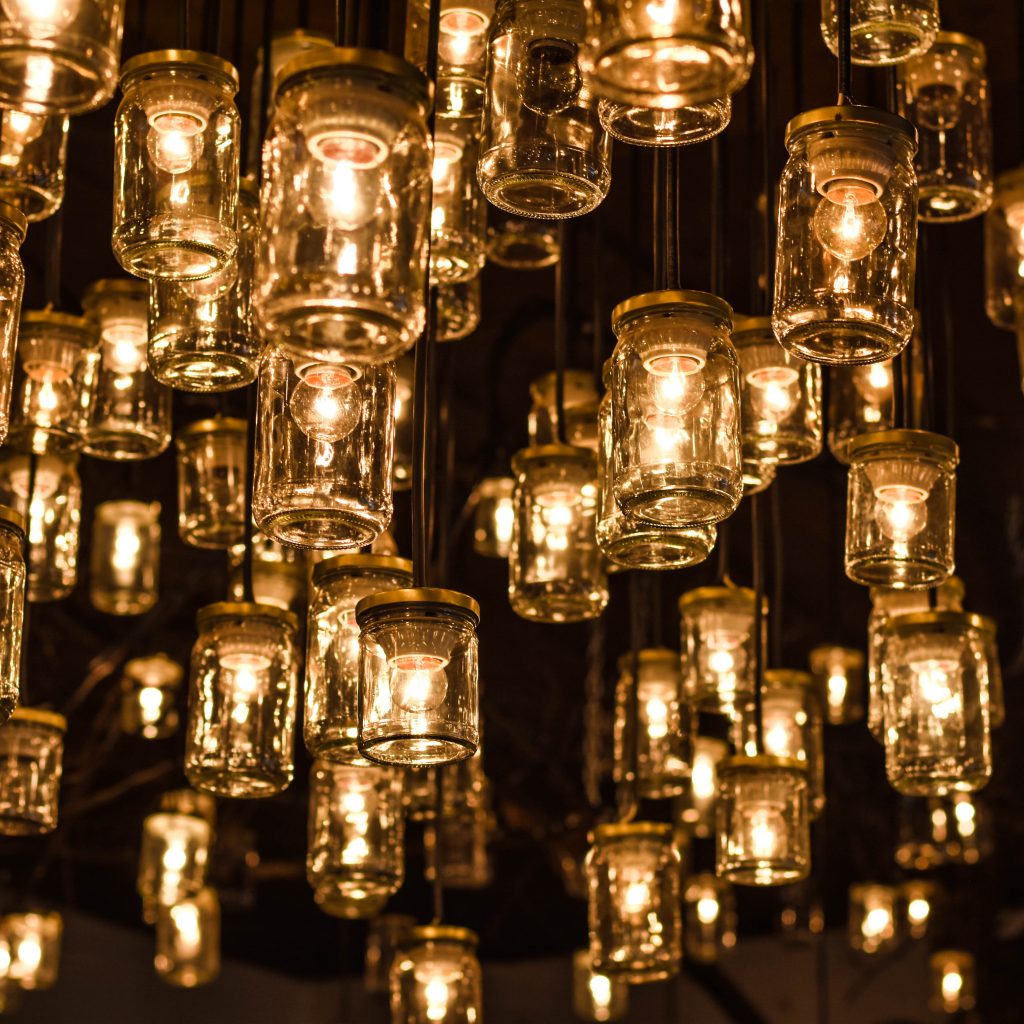
Mason jars are great vessels for storing anything. But if you’re looking for an idea outside of the box, here is one that’ll bring the farmhouse aesthetic into your house. Making a vintage mason jar fixture is easy. You only need a handful of basic tools.
First, choose a jar depending on how big of a fixture you want. For this, you might want to opt for antique-looking jars. Then get a pendant and a light bulb from your local hardware store. You can’t really go wild with the pendant, but you can find some fun-looking light bulbs that’ll look great in the antique jar. When you find the bulb of your dreams, ensure it fits into the jar.
When you have everything you need, it’s time to build. Unscrew the connector from the end of the pendant, the part that holds the lightbulb in place.
Place the remaining end of the cable over the lid and trace around it. Now you need to open a hole the exact size of the mark you left on the cover. For that, you can use a drill to punch several holes in the trace and cut the rest with the help of a pair of scissors, unless you have a tin cutter.
Next, place the end of the pendant cable in the hole and screw back the part you removed in the beginning. Seal the gap between the fixture and the lid with super glue or molding clay, so you don’t end up making a pretty fly trap. Then screw the light bulb into the fixture and put the lid on the jar.
You can use it as a nightstand lamb or hang it on the ceiling with some hooks. You can also install it within your ceiling or call an electrician to do that for you.
Storing Anything Around the House
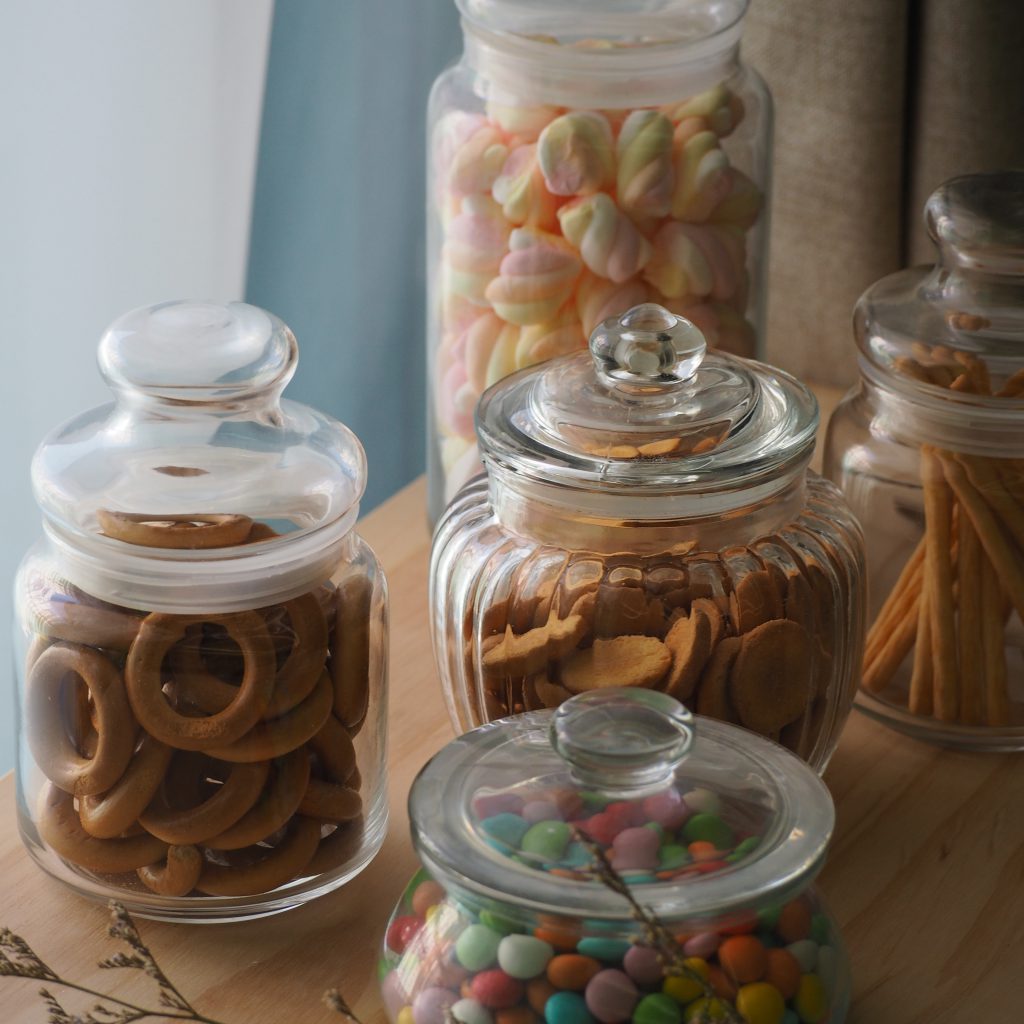
Talking about DIY projects, if you like making interesting and beautiful crafts in the house you must have lots of gewgaws lying around to be used as decoration one day. Mason jars are blessings in disguise, not only to be used in DIY projects but also for DIY projects.
They are great organizers that can relieve you from the chaos at the end of an arts and crafts session. Crayons, buttons, beads, glitter, googly eyes, you can keep all of them in mason jars until the next DIY project. Jars also fit in drawers and can be placed vertically or horizontally. Plus, they are see-through so you can easily find what you’re looking for among a dozen jars in the cabinet.
Bonus: How to Remove Label Glue off a Mason Jar

You can use mason jars almost anywhere around the house. They are incredibly useful while being aesthetically pleasing, as long as you remove the glue off them.
To do that, mix a teaspoon of cooking oil and the same amount of baking soda, and rub the mixture over the sticky parts with leftover glue on the jar. Some parts will be removed instantly. For more tenacious sticky glue, leave the mixture on for up to half an hour and rub it with a kitchen sponge or steel wool. Now your mason jar is ready to serve you in the house in any way you like!
Over and Out!
Mason jars are perfectly sealable, non-toxic, and come a dime a dozen, which makes them the perfect containers to be used in the kitchen — or any other place around the house. Even better if you like to sprinkle your home with some rustic aesthetic. If you set your mind to it, you’ll never run out of things to do with mason jars.


